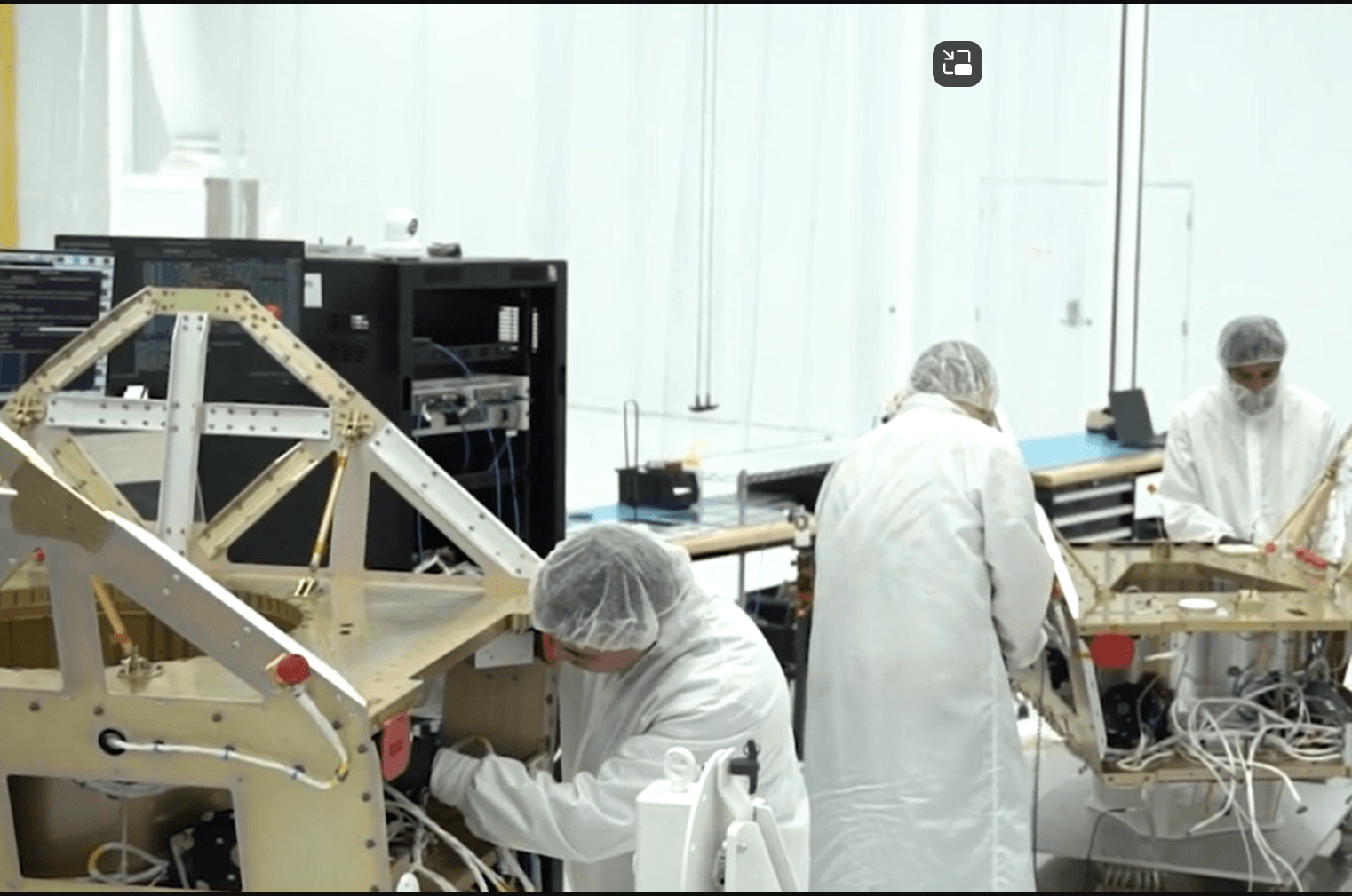Imagine a colossal solar power station orbiting Earth, capturing the sun’s energy 24/7 and beaming it down to our planet. China has announced plans to construct such a structure—a space-based solar power (SBSP) station spanning approximately 1 kilometer (0.6 miles) wide. This ambitious project aims to harness solar energy in space, where sunlight is uninterrupted and more intense, and transmit it to Earth via microwaves. If successful, the station could collect more energy annually than the total amount of oil extracted globally, potentially revolutionizing the world’s energy supply and significantly contributing to the transition toward renewable energy sources.
Table of Contents
ToggleBackground
Concept of Space-Based Solar Power (SBSP)
The idea of collecting solar energy in space and transmitting it to Earth has been contemplated for nearly a century. In 1923, Russian scientist Konstantin Tsiolkovsky proposed using space-based mirrors to beam sunlight to the ground. Later, in 1968, American engineer Peter Glaser introduced the concept of harvesting solar power in space and transmitting it to Earth using microwaves. The fundamental advantage of SBSP lies in its ability to capture solar energy without the limitations faced on Earth’s surface, such as atmospheric absorption, weather conditions, and the day-night cycle. In space, solar panels can receive constant and intense sunlight, potentially providing a continuous and reliable energy source.
Historical Context
Over the decades, various national studies and research initiatives have explored the feasibility of SBSP. In the 1970s, NASA conducted studies to assess the potential of solar power satellites. More recently, countries like Japan and the United Kingdom have shown interest in developing SBSP technologies. In 2021, China initiated the construction of its first experimental space solar power station in Bishan, marking a significant step toward realizing this technology. By 2023, Chinese researchers had successfully tested components essential for SBSP, such as energy transmission systems. These developments indicate a growing global interest in SBSP as a viable solution for sustainable energy production.
China’s Ambitious Project
Project Details
China is advancing plans to construct a space-based solar power station, aiming to deploy a gigawatt-level facility by 2040. The project envisions a large-scale solar array positioned in geostationary orbit, approximately 35,786 kilometers (22,236 miles) above Earth, to capture continuous solar energy. This energy would be converted into microwaves and transmitted wirelessly to ground-based receiving stations, where it would be converted into electricity for distribution.
The development timeline includes launching a small-scale electricity generation test in 2022, followed by a megawatt-level orbital power station by 2030. The gigawatt-level geostationary station will require over 10,000 tonnes of infrastructure, delivered using over 100 Long March 9 launches.
Technological Innovations
To realize this ambitious project, China is focusing on several key technological advancements:
- Heavy-Lift Launch Vehicles: The Long March 9 rocket, currently under development, is designed to transport the substantial infrastructure required for the space-based solar power station. With a payload capacity exceeding 100 tonnes to low Earth orbit, it will play a crucial role in deploying the necessary components.
- Wireless Power Transmission: Efficiently transmitting energy from space to Earth is a significant challenge. Chinese researchers have successfully tested technology that would enable a space-based solar power plant to transmit energy to Earth.
- Modular Assembly and Maintenance: Constructing and maintaining a large structure in space necessitates modular designs and robotic assembly techniques. China plans to utilize its Tiangong space station to test key technologies required for space-based solar power, including in-orbit construction and maintenance methods.
These technological innovations are essential to overcoming the challenges associated with deploying and operating a space-based solar power station, positioning China at the forefront of this emerging field.

Potential Impact
Energy Production
China’s space-based solar power (SBSP) initiative has the potential to revolutionize global energy production. By positioning solar arrays in geostationary orbit, the system can harness uninterrupted solar energy, unaffected by Earth’s atmospheric conditions or the day-night cycle. This continuous energy collection could yield significantly higher output compared to terrestrial solar farms. For instance, a space-based solar power station could produce energy 13 times more efficiently than Earth-based counterparts, as it would have constant exposure to sunlight without atmospheric interference.
Environmental Benefits
The environmental advantages of SBSP are substantial. By providing a consistent and clean energy source, space-based solar power could significantly reduce reliance on fossil fuels, thereby decreasing greenhouse gas emissions and mitigating climate change. Additionally, SBSP systems would have minimal environmental footprints on Earth’s surface, preserving natural habitats and reducing the need for large-scale land use associated with traditional solar farms.
Economic and Geopolitical Implications
Economically, the development of SBSP technology could position China as a leader in renewable energy, potentially creating new markets and job opportunities in high-tech sectors. Geopolitically, achieving a functional SBSP system could enhance China’s energy security and reduce dependence on energy imports, thereby increasing its influence in global energy markets. However, it may also prompt strategic competition, as other nations may accelerate their own SBSP initiatives to maintain energy independence and technological parity.
Challenges and Criticisms
Technical Challenges
Implementing SBSP involves significant technical hurdles. Constructing and deploying large solar arrays in space require advancements in space manufacturing and assembly. Efficiently transmitting energy from space to Earth necessitates the development of safe and effective wireless power transmission methods, such as microwave or laser technologies. Additionally, maintaining and repairing such infrastructure in the harsh space environment poses further challenges.
Economic Feasibility
The economic viability of SBSP is a subject of debate. Critics argue that the high initial costs of developing and deploying space-based solar power stations may outweigh the potential benefits, especially when compared to rapidly advancing and increasingly cost-effective terrestrial renewable energy technologies. A NASA report has expressed skepticism regarding the cost-effectiveness of SBSP, suggesting that the technology may not provide low-cost green energy as efficiently as hoped.
Safety Concerns
Safety is a critical consideration in SBSP development. The transmission of energy via microwaves or lasers raises concerns about potential impacts on human health, wildlife, and the environment. Ensuring that energy beams are precisely targeted and that fail-safes are in place to prevent accidental exposure is essential. Moreover, the presence of large structures in space increases the risk of collisions with space debris, which could have cascading effects on other satellites and space operations.
International Landscape
Global Initiatives
China is not alone in pursuing space-based solar power (SBSP) technologies. The European Space Agency (ESA) has shown keen interest in exploring the practical and economic applications of SBSP.
In the United States, the California Institute of Technology (Caltech) launched a Space Solar Power Demonstrator in January 2023, which has successfully demonstrated its ability to wirelessly transmit power in space.
Additionally, startups like Aetherflux, founded by Robinhood co-founder Baiju Bhatt, aim to develop satellite constellations that collect solar power in low Earth orbit and beam it to Earth using infrared lasers.
Collaborative Efforts
International collaboration is crucial for the advancement of SBSP. The International Academy of Astronautics (IAA) has been studying the concept of space solar power for over four decades, emphasizing the need for global cooperation in this field.
Collaborative efforts can help address technical challenges, share costs, and establish standardized regulations, facilitating the development and deployment of SBSP systems worldwide.
Regulatory and Ethical Considerations
Legal Framework
The deployment of SBSP systems involves navigating complex legal frameworks. International space law, including treaties like the Outer Space Treaty of 1967, governs activities in outer space. These treaties emphasize that space exploration should benefit all countries and prohibit the appropriation of outer space by any one nation. Additionally, the transmission of energy from space to Earth requires compliance with regulations concerning electromagnetic spectrum usage and space traffic management.
Ethical Implications
Ethical considerations are paramount in the development of SBSP. The international community should ensure that the benefits of space-based solar energy are distributed fairly, in line with the principles outlined in the Outer Space Treaty, which stresses that the exploration and use of outer space shall be carried out for the benefit and in the interests of all countries.
Moreover, the potential environmental impacts of deploying large structures in space and transmitting energy to Earth must be carefully assessed to prevent harm to both space and terrestrial ecosystems.
Conclusion
China’s ambitious endeavor to construct a space-based solar power (SBSP) station represents a significant leap in the pursuit of sustainable and continuous energy sources. By aiming to deploy a kilometer-wide solar array in geostationary orbit, China seeks to harness uninterrupted solar energy, potentially transforming global energy dynamics and reinforcing its position as a leader in space technology.
The potential benefits of this project are substantial, including the provision of a consistent and clean energy supply that could reduce dependence on fossil fuels and contribute to environmental sustainability. However, the initiative also faces considerable challenges, encompassing technical complexities, economic feasibility concerns, and safety issues related to energy transmission and space operations.
As China progresses with its SBSP plans, the global community will closely observe the project’s development, assessing its implications for energy production, environmental impact, and geopolitical relations. The success or failure of this venture could significantly influence the future trajectory of renewable energy technologies and international collaboration in space exploration.












